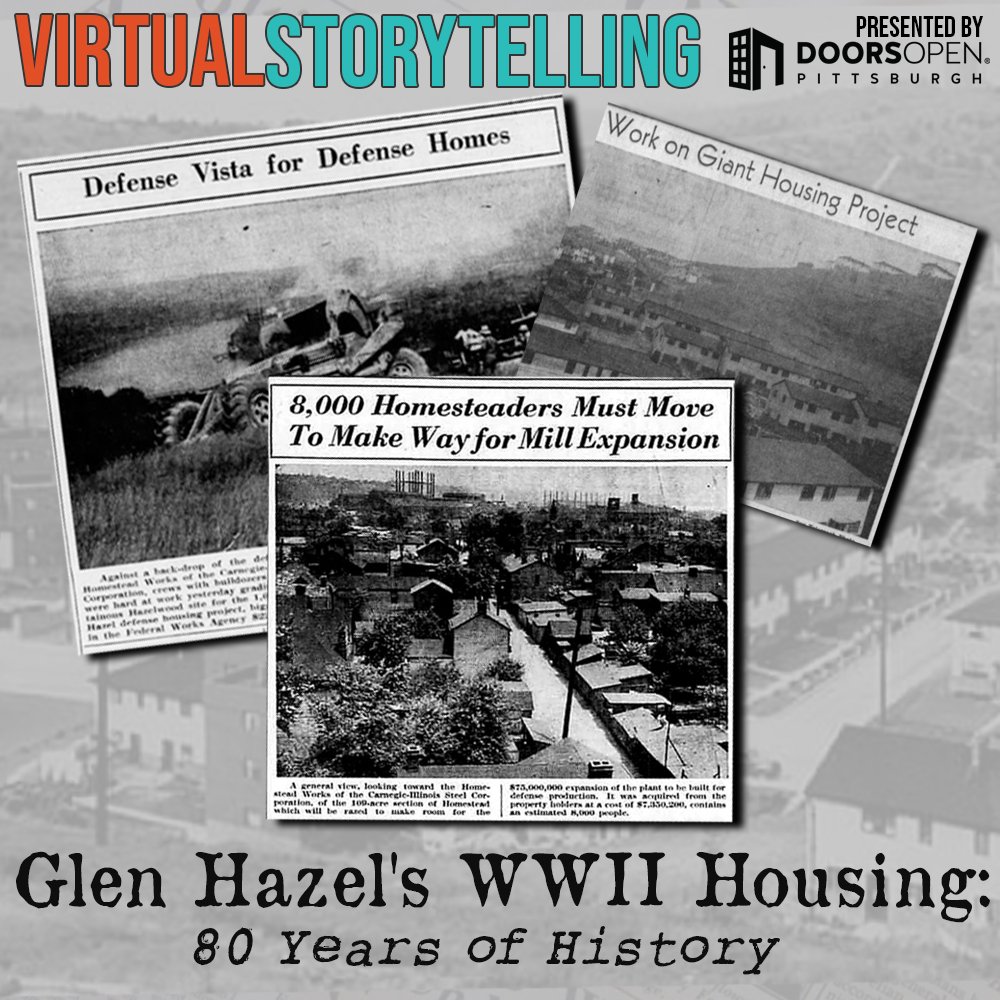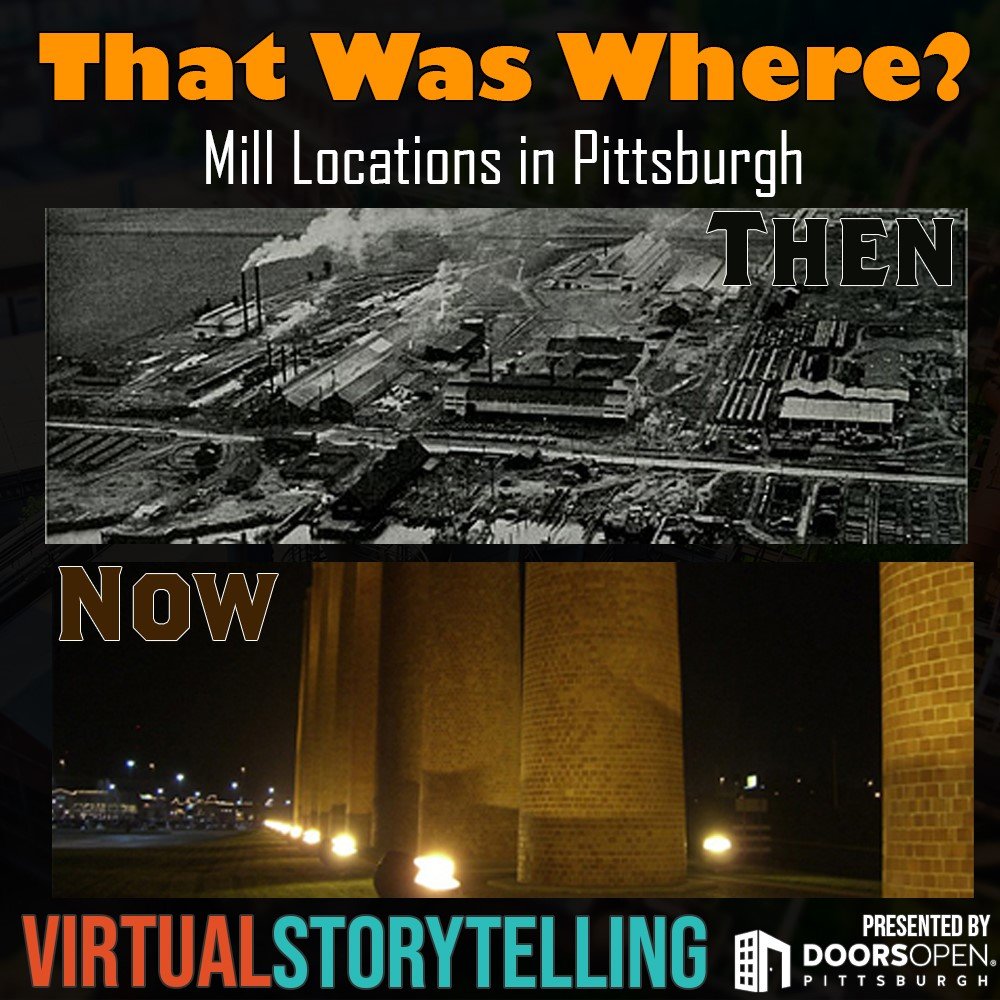Whiskey, Women, and Pittsburgh’s Diamond
Since Pittsburgh’s early days, when residents called it “the Diamond,” Market Square has been a place where people go to have a drink. But from the days of the Whiskey
Since Pittsburgh’s early days, when residents called it “the Diamond,” Market Square has been a place where people go to have a drink. But from the days of the Whiskey Rebellion to the heyday of the Woman’s Christian Temperance Union, more went on in those taverns and saloons than just drinking. Come hear the stories of women like Molly Murphy and Frances Willard, whose lives intersected in Market Square with the powerful politics of whiskey.
This story was recorded on February 28, 2022.
Your Storyteller
Debbie Edwards is a retired teacher and freelance writer who loves to explore the nooks and crannies of women’s history in western Pennsylvania.
Beyond the No Outlet Sign: Private Spaces in Public Places
How many times while driving around Pittsburgh have you seen a street sign which states No Outlet? Pittsburgh may lead the country with the number of dead-end streets. Many are
How many times while driving around Pittsburgh have you seen a street sign which states No Outlet? Pittsburgh may lead the country with the number of dead-end streets. Many are caused by the hilly terrain where the street may end at a cliff. Yet others are created to end on purpose.
This tour will reveal several purposeful dead-end streets located in the East End, which were carved out of neighborhoods to form highly desirable living places. Many of us pass by these streets every day and never venture down them. Join DOORS OPEN Pittsburgh and Robert Jucha as we look down some of these streets to see what lies beyond the No Outlet sign.
This story was recorded on February 21, 2022.
Your Storyteller
Robert Jucha has participated as a volunteer docent for the Pittsburgh History and Landmarks Foundation for 13 years. During that time he has given numerous walking tours of Downtown Pittsburgh, Oakland and Shadyside.
In addition to his work with the Pittsburgh History and Landmarks Foundation, Mr. Jucha has also taught classes on Pittsburgh architecture and neighborhood histories at both CMU Osher and Pitt Osher.
Glen Hazel’s WWII Housing: 80 Years of History
Explore 80 years of the Glen Hazel Defense Housing Project’s history. Originally built for relocation of steelworkers during World War II, the project was the largest of four federally owned
Explore 80 years of the Glen Hazel Defense Housing Project’s history. Originally built for relocation of steelworkers during World War II, the project was the largest of four federally owned communities in Allegheny County.
But how did a military project become one of Pittsburgh’s 90 neighborhoods? Join JaQuay Carter to explore the project’s impact on the City, including its connection to August Wilson.
When you register on Patreon through the button below, you gain access to all of our Virtual Storytelling On-Demand recordings for $10 per month. Cancel at any time.
This story was recorded on February 14, 2022.
Your Storyteller
Award-winning historian and USMC Veteran, JaQuay Edward Carter, has a long history of serving others, both in the community and in the military.
JaQuay was born in Glen Hazel, where four generations of his family had lived before. Mr. Carter began his post-secondary education at the Community College of Allegheny County, earning an associate degree in Ethnic and Diversity Studies. Soon after, JaQuay enrolled at the University of Pittsburgh, where he received a bachelor’s degree in History Education and Africana Studies.
In January of 2018, JaQuay was directed back to his hometown through a passion for history and neighborhood pride. He founded the Greater Hazelwood Historical Society of Pittsburgh to “restore pride and preserve the pillars of our community’s past.”
Since then, Mr. Carter developed a large following. He continues to teach, inspire, and unite people through the exploration of our shared history.
Henry Hornbostel’s Impact on Pittsburgh
Pittsburgh’s beautification efforts are ever evolving. Henry Hornbostel’s early twentieth century advancements in elegant architecture made Pittsburgh a leader in the City Beautiful movement. Employing his mastery of the Beaux
Pittsburgh’s beautification efforts are ever evolving. Henry Hornbostel’s early twentieth century advancements in elegant architecture made Pittsburgh a leader in the City Beautiful movement. Employing his mastery of the Beaux Arts styles, Hornbostel won a series of design competitions–both locally and nationally. As architectural influences changed, Hornbostel adapted with his later work showing an original approach to design in the Art Deco style.
Henry Hornbostel’s accomplishments within the region expand beyond architecture. Notably, he was the first Dean of the College of Fine Arts at Carnegie Tech (now known as Carnegie Mellon). He also served as Director of Parks and Director of Aviation for Allegheny County.
Between his contributions to architecture and service to the community Henry Hornbostel deserves wider recognition, and storyteller Paul Tellers will explore why in this presentation.
When you register on Patreon through the button below, you gain access to all of our Virtual Storytelling On-Demand recordings for $10 per month. Cancel at any time.
This story was recorded on January 31, 2022.
Your Storyteller
Paul J. Tellers is an architect and planner. He was the University Architect at Carnegie Mellon University, the Director of Planning at WTW Architects, Facilities Planning Director for a CUNY College in Queens, New York, and a Project Manager for the Pittsburgh Cultural Trust.
Tellers serves as a guide for historical Pittsburgh tours for Pittsburgh History & Landmarks Foundation, Rivers of Steel, Bike the Burgh, and DOORS OPEN Pittsburgh. Tellers is currently a docent at the Carnegie Museum of Art and a member of the Bach Choir of Pittsburgh.
That Was Where? Mill Locations in Pittsburgh
Western Pennsylvania has long been viewed as the home of the steel industry but what happens when the landscape changes and mills close or move away? Long before the dominance
Western Pennsylvania has long been viewed as the home of the steel industry but what happens when the landscape changes and mills close or move away?
Long before the dominance of Big Steel, the Pittsburgh Industrial District’s landscape was populated with a multitude of small iron and steel mills. For more than 150 years, iron and steel forged the landscape along the Three Rivers. Here, the works of smaller specialty mills joined forces with “Big Steel” to build the nation’s railroads, skyscrapers, bridges and homes–to serve in war and in peace.
This virtual storytelling episode focuses on the once intense concentration of mills in the region, and how the landscape has changed over the last half century as the mills closed or moved away. We will take a look at where mills were located along the Three Rivers, and what is there now.
When you register on Patreon through the button below, you gain access to all of our Virtual Storytelling On-Demand recordings for $10 per month. Cancel at any time.
This story was recorded on January 24, 2022.
Your Storyteller
Ron Baraff is a Pittsburgh native who has been in his current position as the Director of Historic Resources and Facilities for the Rivers of Steel National Heritage Area, in Homestead, Pennsylvania since 1998.
He supervises the Rivers of Steel National Heritage Area Archives and Museum, Interpretive and Tourism Programming, and Historic Sites– including the Carrie Furnaces National Historic Landmark site in Rankin/Swissvale, the Battle of Homestead site and Pump House in Munhall, the National Historic Landmark W.A. Young and Sons Machine Shop and Foundry in Rices Landing, Pennsylvania.
In addition to his duties with the Rivers of Steel National Heritage Area, Mr. Baraff has worked on a variety of public history projects including many national and international documentaries.
Pittsburgh Jazz: Home of the Innovators
The Pittsburgh jazz community has fostered diversity across sectarian lines of race, gender, age and socioeconomic factors for decades. Learn about the depth of the jazz scene of the 60s
The Pittsburgh jazz community has fostered diversity across sectarian lines of race, gender, age and socioeconomic factors for decades. Learn about the depth of the jazz scene of the 60s through the present with highlights from the erstwhile Crawford Grill #2. Dive into how mentorship was the most effective way to learn the complete language of jazz, with a focus on lessons in life–not just didactic skills.
Follow storyteller Dr. Nelson Harrison through this journey of how jazz is unlimited creativity, and a natural sequel to true training. Follow the journey of jazz as the only art form officially designated as a National Treasure and learn how the journalist labeling of styles of music is anathema to a true jazz musician who has the ability to play all music.
When you register on Patreon through the button below, you gain access to all of our Virtual Storytelling On-Demand recordings for $10 per month. Cancel at any time.
This story was recorded on January 17, 2022.
Your Storyteller
Nelson E. Harrison is a Ph. D. in clinical psychology, educator, composer, archivist, lyricist, arranger, speaker, veteran trombonist of the Count Basie Orchestra, active musician on the Pittsburgh market for 65 years spanning music genres from the Pittsburgh Symphony Orchestra, Civic Light Opera, blues, top jazz clubs, Dixieland, klezmer, weddings, top 40, cabarets, dance bands, stage bands, etc.
He has produced shows at Heinz Hall and composed musical scores for plays by August Wilson and others. He has headlined bands for local jazz festivals and toured the world performing at festivals from New Orleans, Edinboro, Sacramento, Santa Cruz, Japan, New York, London, etc. He has produced TV shows for PBS, PCTV and been interviewed for many radio shows locally and on blog-talk radio.
Nelson has mentored several generations of jazz students who have become major recording artists and performers today. He has received many awards and citations spanning from Pittsburgh, Allegheny County, IAJE, MCG, and 6 lifetime Achievement Awards.
Theatres of the Old Northside
Do you ever wonder what happened to the old Garden Theatre ticket booth? How about the nickelodeon theatre on Spring Garden Avenue? Join storyteller, Jim Kastner, as he takes you on a
Do you ever wonder what happened to the old Garden Theatre ticket booth? How about the nickelodeon theatre on Spring Garden Avenue? Join storyteller, Jim Kastner, as he takes you on a visual walk through the theatres of the old Northside.
See the nickelodeons and movie theatres that were located in old Allegheny City (now the Northside), Manchester, Brighton Road, Woods Run, Perrysville, Troy Hill, and Spring Garden. Yes, Spring Garden. Hear about the Northside’s only drive-in movie theatre that literally ended its life with a bang, and more!
When you register on Patreon through the button below, you gain access to all of our Virtual Storytelling On-Demand recordings for $10 per month. Cancel at any time.
This story was recorded on January 10, 2022.
Your Storyteller
Jim Kastner was a 70-year resident of Pittsburgh. Born and raised on Spring Hill and schooled on Troy Hill, he spent most of his free time as a kid in the Northside’s old East Street neighborhood, known today as the Parkway North. He saw his first movie at the Garden Theatre in 1955.
It was his fondness for theatres and movies that led to his publishing Where the Movies Played in Downtown Pittsburg(h), which begins with a tribute to his Northside roots when he and all the neighborhood kids walked to the movies. Jim is now retired and living in Raleigh, North Carolina, and is honored to share this journey with DOORS OPEN Pittsburgh ticketholders and patrons.







